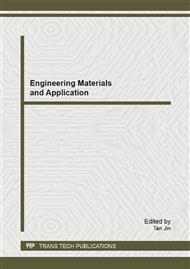p.917
p.922
p.926
p.931
p.937
p.943
p.949
p.955
p.961
Dynamic Surface Neural Control for a Class of Nonlinear Time-Varying Delay Systems Preceded by Unknown Hysteresis
Abstract:
In this paper, a new robust adaptive neural dynamic surface control is proposed for a class of time-varying delay nonlinear systems preceded by backlash-like hysteresis. Compared with the present schemes of dealing with time-varying delay and hysteresis input, the main advantages of the proposed scheme are that the prespecified transient and steady state performance of tracking error can be guaranteed for the first time when using DSC to deal with the time-varing delays; the computational burden can be greatly reduced and the explosion of complexity problem inherent in backstepping control can be eliminated. It is proved that the new scheme can guarantee all the closed-loop signals semi-globally uniformly ultimate bounded. Simulation results are presented to demonstrate the validity of the proposed scheme.
Info:
Periodical:
Pages:
937-942
Citation:
Online since:
January 2013
Authors:
Price:
Сopyright:
© 2013 Trans Tech Publications Ltd. All Rights Reserved
Share:
Citation:


